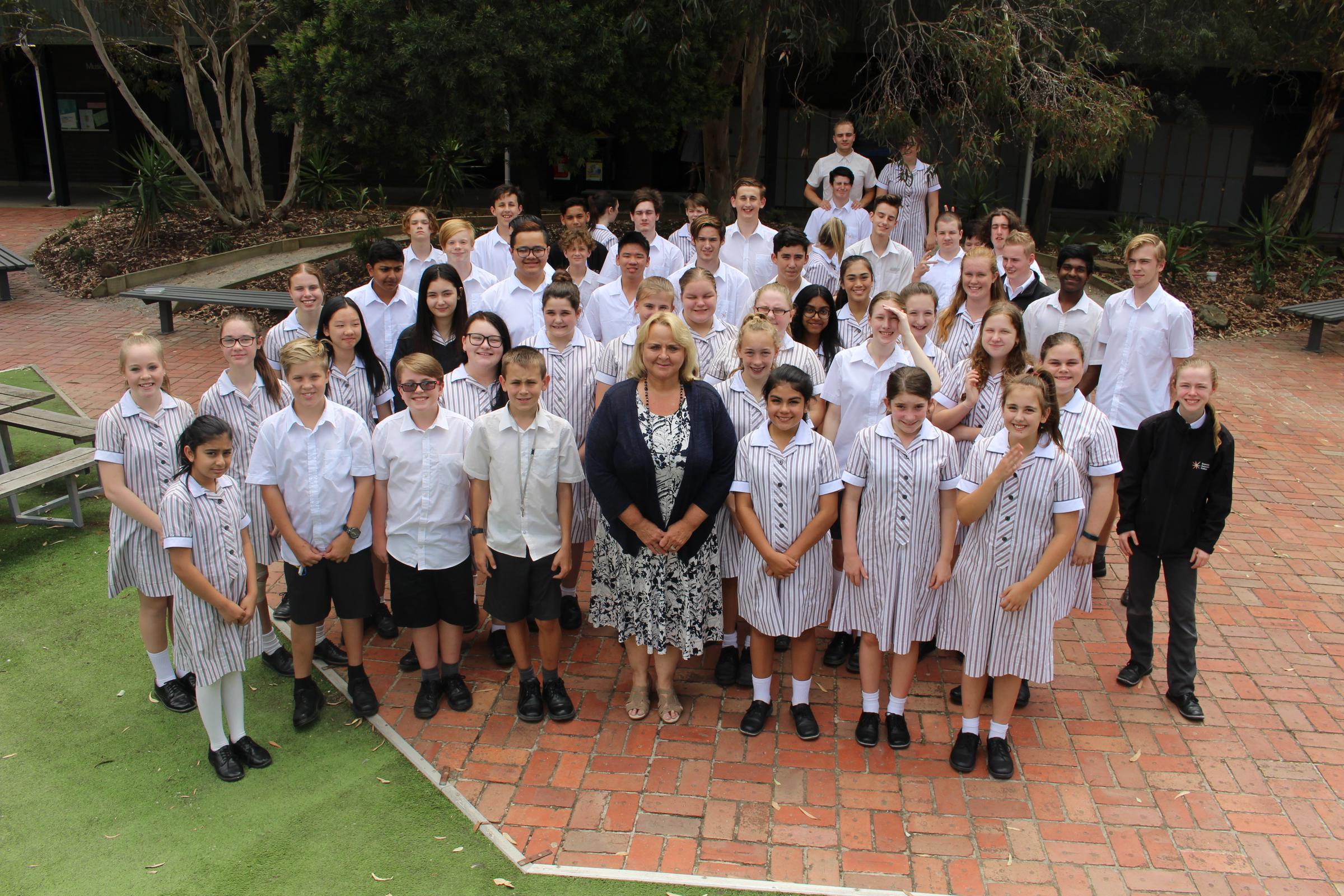College Principal's Report

Welcome to our last edition of Score for 2018
Recently I had the pleasure of interviewing our prospective student leaders for 2019. Working with students is one of the most enjoyable aspects of my role and provides purpose and motivation for the work I carry out on a daily basis. What impressed me most about the interviews, was the genuine commitment each of the candidates had students for representing their fellow students and pride they have in their College. The process for selecting our College Captains and Vice Captains has taken place over the past few weeks and included nominations, candidate speeches, interviews and voting by student and staff. The end results were very close as all of the candidates were worthy of taking on these important roles. I thank all candidates who were nominated and I am pleased to announce the following appointments.
College Captains:
Jared Larter
Maddy Beet
Damon Towart
College Vice Captains
Skye Inwood
Mitchell Spooner
and Tristan Morgan
Orion Night
On Wednesday 12 December we will celebrate Orion Night, our whole school presentation evening to celebrate the achievements of our students throughout the year. I would like to thank Mr. Chris Knight in advance for his work in leading the team who have been preparing for the evening. While not all students can receive awards, the students who have received them, deserve to be congratulated on their hard work and dedication to their studies this year. I look forward to celebrating the success of our students and hope to see many families in attendance.
Report Writing Day
Congratulations to students who have applied themselves throughout the year, especially those who have reflected on assessments, taken on board feedback and applied suggested strategies for improvement. It is important to remember that some student’s self-esteem is affected because they feel they have let others down even when they have worked to the best of their ability.
How do we encourage genuine positive self-esteem in our young people at this time? One way is to provide unconditional positive acceptance, while encouraging an appreciation of individual special abilities and worth. This involves showing that you do care and respect their skills across a broad range of activities, not merely judging them based on their behaviour or academic success. I regularly talk to students about the importance of doing their personal best and not to compare themselves against others achievements. It is important for young people to know with certainty that we care about what they are doing especially when they do try hard.
However, there are also some students who have not maximised the opportunities for learning provided and have not established good homework practices. For these students the news that they may be attending meetings to discuss their progress should not be a surprise to them. The implementation of agreed strategies from these meetings will not be an option but rather a requirement to support their outcomes for next year.
Thank you to Ms Fiona Matthews for her work in leading the report writing process and teachers for their work throughout the assessment period.
Orientation Day
Next Tuesday we will welcome our new 2019 Year 7 students as they engage in their first full day of activities at the college as part of their orientation day. I would like to congratulate Ms Emily Phibbs, Acting Head of Junior School and Year 7 Coordinator and the team of staff who will lead the day. Transition programs that are well planned and implemented can set up solid foundations for students to settle into their secondary environment.
CYBERSAFETY
As we head towards the holiday period it is timely that I provide information and advice to parents on strategies to support adolescent cybersafety.
What is Cybersafety?
Cybersafety refers to the way in which people behave safely and responsibly to keep themselves and their friends safe online. Children and young people are no longer passive recipients of information that is available on the internet. They actively produce web content and publish their personal details, creative works and comments on sites such as YouTube and Facebook.
What are Cybersafety issues?
Cyebrsafety issues include, but are not limited to: cyberbullying, digital reputation, sexting, social media use and problematic internet use.
Why is these issues rising?
Social media is more accessible than ever – with the rise of smartphones and tablets , it has never been easier to jump online. For young people, it means being more connected than any other generation – friends are never more than a tweet away. Unfortunately this has also led to a rapid increase in cyberbullying to the point that at least one in 10 children are cyberbullied each year.
Cyberbullying can be very different from traditional bullying, and many parents can feel ill-equipped to respond if their child is being cyberbullied. Susan McLean, a former police officer and Australia’s leading cybersafety expert, said ‘even if parents have no experience with social media, by following a few basic steps, parents can effectively support their children to be safe online’.
'Parenting in the 21st century requires you to be able to parent in the digital space,' Ms McLean said. 'Technology is firmly entrenched in our lives and that of our children so we need the tools to deal with issues as they arise.' 'It’s really important that if your child is being cyberbullied, you don’t cut them off from social media and take their technology away - the vast majority of kids won't tell a parent if they are bullied and harassed online for fear of losing access. They would much rather put up with the bad to keep the good.'
When confronted with your child being cyberbullied, parents should follow the cyberbullying quick response checklist:
- Reassure and comfort
- Don't respond
- Block and delete bully
- Report to the site
- Keep a copy
- Tell school (or relevant place) and seek action
- If ongoing inform Police
- Support your child as they have done nothing wrong
Types of Cyberbullying
Cyberbullying is bullying using digital technologies including mobile phones, email and social media tools. Cyberbullying includes:
Pranking
Repeated hang ups, anonymous, mocking or threatening phone calls.
Image sharing
Forwarding or sharing unflattering or private images without permission.
Sexually explicit images
People of any age, who forward or share images of a sexual nature of a person under 18 need to be aware that this is a criminal offence (child pornography) that may result in prosecution.
Text and email
Sending insulting or threatening text messages or emails.
Personal online information
Publishing online someone's private, personal or embarrassing information without permission, or spreading rumours online.
Identity theft
Assuming someone’s identity online and negatively representing them in a way that damages their reputation or relationships.
Hate sites
Creating hate sites or implementing social exclusion campaigns on social networking sites.
Other types of Cyberbullying
It is also cyberbullying when a student, or students, uses technology to run a multi-step campaign to bully another student. For example, setting another student up to be assaulted, video-recording their humiliation, posting the video-recording online and then sending the website address to others.
Cyberbullying vs bullying
While cyberbullying is similar to bullying in some ways, there are also differences.
Differences: Cyberbullying is invasive
Cyberbullying can be difficult to escape and is incredibly invasive. It is more likely to occur outside of school, including while at home, and can happen at any time.
Cyberbullying can involve a large audience
Cyberbullying can involve harmful material being widely and rapidly shared to a large audience, for example, rumours and images can be posted on public forums or sent to many people at once. This material can also continue to





